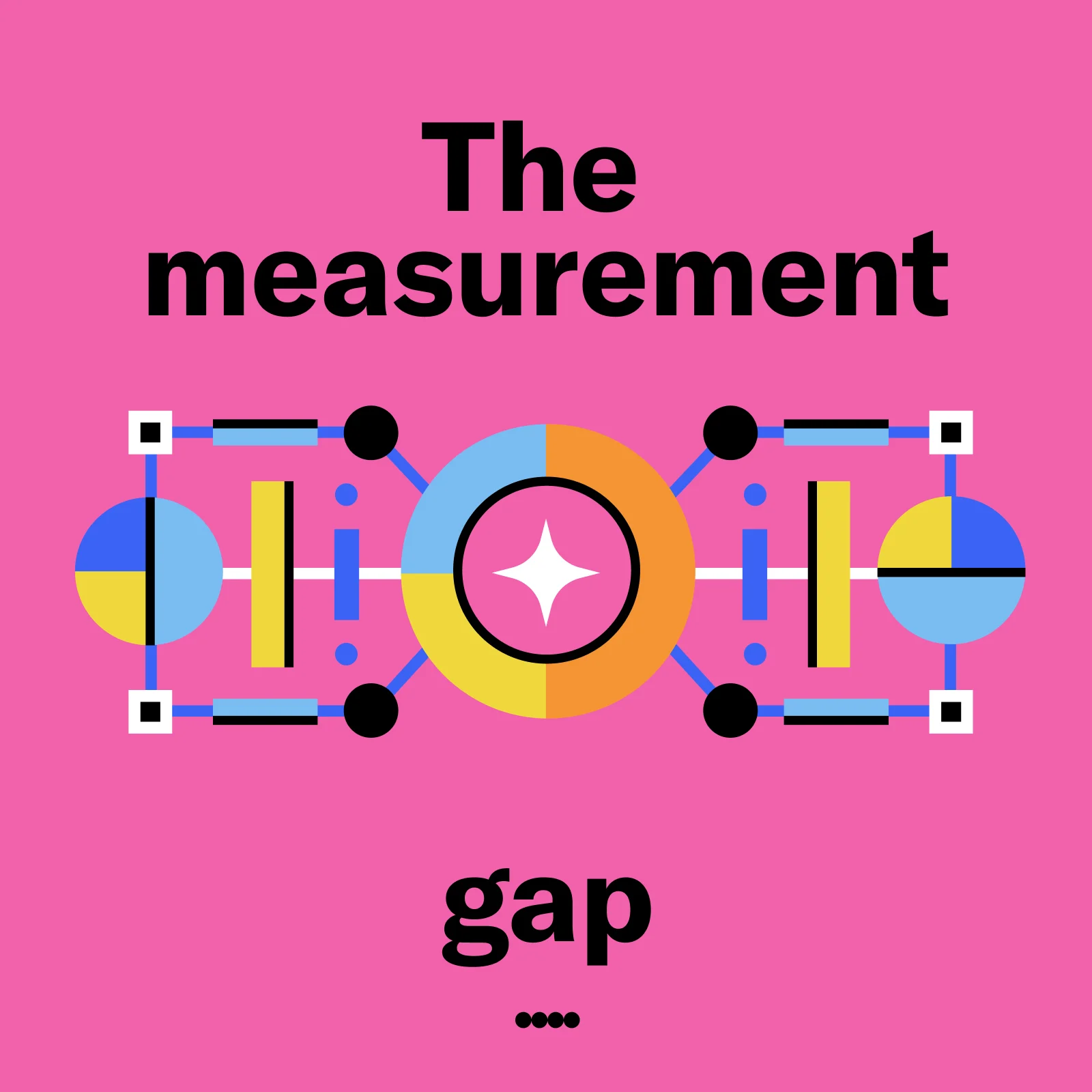
Voiceover Trends, Tips, and Tricks for 2023
From audio to video to out in the world, we hear it everywhere. We’re talking about voiceovers (VO). As a leader in the digital audio space, they’re a big deal to us. And our team of audiophiles at Studio Resonate knows that VO talent can make or break an ad, bring a brand to life sonically, and add memorable notes and tones to make products shine. It’s all about casting the right voice and providing expert direction—that’s how ad magic is made.
That’s why we showed up at the Society of Voice Arts and Sciences (SOVAS) That’s Voiceover conference in a big way. Last month, we were there with Miya Kanzaki, Associate Creative Director, leading and participating in panels and events—and soaking up all the latest trends in talent, tech, and tone.
Look, we get it; not everyone is obsessed with good VO work like we are. So, we captured all the key takeaways and threw in some tips and best practices below to help you nail your next digital audio ad.
Trending Talent
We were excited to see the topic of diversity shine at the conference. There was a lot of buzz about ways to think more broadly when it comes to casting. At Studio Resonate, we took a stand for sonic diversity (diversity and inclusion in voice casting)—and we’re doing our part. We have a diverse roster of 250+ VO actors (African American, Spanish language, non-binary, neutral English and Spanish, and regional English and Spanish). We cast talent based on just that, talent. And we don’t wait for a specific note to recommend people of color, members of the LBGTQIA+ community, or someone who may have an accent. We know that tone, talent, and fit can come from a variety of voices.
Takeaway: To resonate with audiences on a deeper emotional level, don’t limit casting by race, gender, or identity, and don’t pigeonhole talent by category. Prioritize quality VO and be open to making diverse casting choices.
Trending Tech
AI was the big tech conversation at the SOVAS conference. These artificial voices are popping up in everything from eLearning, to video games, to the first ever Afro-Latina AI Virtual Influencer (C.LAi.R.A). With these evolutions and advancements, voice actors can own and manage their voices, allowing them to book jobs they may be too busy to physically perform. Furthermore, new technology has also allowed their voices to be used in different languages or accent conversions. But with advancements come missteps (notably, the TikTok text-to-speech lawsuit). As a result, companies today are working to create standards to protect voice actors.
Takeaway: It’s not if AI is coming to VO—it’s already here. What’s next is finding ethical ways to use AI while respecting our VO community.
Trending Tones
You know that radio announcer voice? That booming, authoritative AM/FM mainstay that does everything from warning us about an approaching snowstorm to selling us snow shovels (with little difference in tone). That doesn’t work for digital audio audiences, where they select content that speaks directly to them. As a result, our roster has evolved greatly over the last 10 years toward a conversational, casual style. Rather than disrupting the flow of entertainment, we work with VO talent to create something that works with the medium and captures attention in a good way.
The vibe at the SOVAS conference indicates that we’re not alone. Authentic, natural, relatable reads are replacing the announcer-style VO. And when it comes to podcasts (where host reads are still popular), it’s critical that announcer reads fit into the listening environment and meet the audience where they are.
Takeaway: Digital audio offers better targeting, allowing brands to connect with the listener (rather than shouting at a crowd on terrestrial radio). VO tone should take advantage of the intimacy of the medium with conversational, authentic delivery.
On-Trend Direction Tips
Sounding natural isn’t as easy as you may think. And just telling someone to sound conversational isn’t going to get the job done. At the conference, we gave feedback to VO talent on script reads—just like we do when we're directing ads. The following tips will help you provide descriptive direction and actionable feedback to voice talent both virtually and in person.
There should only be one. Have one point person or director who will lead direction and feedback. And think about ways to set VO talent at ease (e.g., tell them to have fun). Refer to pacing and inflection, modify the scene, provide more detail—whatever you do, make it clear, to-the-point, and actionable.
Get them in character. Answer common questions to help VO talent get into the zone. Who are they? Why are they interested in this? What are they thinking? If they don't believe in the product or the character they're playing, it will show.
Set the scene. Go beyond traditional cues (e.g., conversational, upbeat, sincere). Put the VO talent in the scene (e.g., you’re in the kitchen sautéing onions and talking to your husband about fire insurance).
Provide some context. Share references like music, SFX, jingles, and mnemonics that you plan to use in your audio spot. This helps the talent get the vibe of the spot.
Encourage physicality. Reads with personality and movement get attention. VOs can sound more expressive when talent is animated (e.g., waving, shrugging, smiling). Listeners won’t see it, but they will hear the difference.
Hear the Difference
As you'll hear, solid direction makes a big difference in VO reads. In this first example, David takes a stab at reading a fictional retail ad.
Ooof, that needs some help. Expert direction to the rescue.
Director's notes: The read is too announcer-y and promo-like. Save that enthusiasm for certain parts of the script and slow the pacing a bit. Try listing the clothing items like musical notes on a scale, stair-stepping or varied. Read “hey athletes” like you’re addressing a small group in a friendly manner vs. addressing a larger group from a distance.
With just a few sentences of descriptive, actionable feedback, this take is infinitely better.
Here's another example. This time David reads a fictional healthcare ad.
Let's try this again with some direction.
Director's notes: The read is too enthusiastic and happy for a healthcare brand. Try to be calm and soothing, with a bit of smile. Welcome the listener with a warm embrace and then guide them on an audio tour of the facility.
Strong direction means fewer takes, which means your ads will sound better and start playing sooner.
On-Trend Demo Tips
We also participated in Speed Dating with Your Demo Reel, where VO talent got our expert feedback in real-time. Here are some tips for up-and-coming VO talent to help them book more jobs with a killer demo.
One minute or less. Edit! Keep it under one minute if possible. Keep your snippets short as well.
Lead with your best. Put your strongest reads towards the beginning. Most directors will not listen to the whole demo (or often past twenty seconds).
Focus on one aspect. Don’t try to put everything into one demo, but do show your range. You can have different demos for different niches (e.g., conversational, acting, narration). A demo should be a collection of spots and the type of work you’re aspiring to get, not a resume/collection of spots you’ve already done.
Add something extra. When you’re auditioning, sometimes a little non-verbal sound or unscripted expression (e.g., adding an “mmm” to a food ad) may be the little thing that gets you noticed. Always go by the script, but adding a few ad libs puts some character into your voice.
Get inspired. Listen to other VO demos for ideas and inspiration.
Ready to Breakthrough With Great VO?
We had a great time at SOVAS. We taught, we learned, and we confirmed that we’re not just on top of trends, we’re setting them. When it comes to attention-getting VO for digital audio for 2023 and beyond, here are some things to keep in mind:
Be authentic with your brand, message, and voice.
Write copy that leverages the targeted audiences the medium provides.
Know your target customer and create ads that speak to them.
Think broadly when it comes to casting.
Keep it conversational and in the flow of what your audience is listening to (i.e., skip the salesy copy and announcer tone).
Our biggest tip: work with the experts at Studio Resonate to really get your VO and audio ad in tune. Let’s talk.
Related Insights
 Streaming
StreamingStreaming Audio Boosts Brand Awareness: Here's How
Dec 12, 2025 Podcasts
PodcastsBeyond Downloads: Where Podcast Measurement is Headed Next
Dec 11, 2025 Podcasts
Podcasts6 Black-Hosted Podcasts That Are Influencing Culture Today
Dec 10, 2025 Digital Audio
Digital AudioHow Digital Audio Complements Video, Social, & Display Campaigns
Dec 9, 2025





